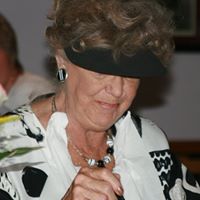Douglas E Rogers
age ~77
from Dallas, TX
- Also known as:
-
- Douglas Edward Rogers
- Douglas R Rogers
- Doug Rogers
- Douglas R Rodgers
- Douglase Rogers
- Phone and address:
-
4053 Throckmorton St, Dallas, TX 75219
5106441793
Douglas Rogers Phones & Addresses
- 4053 Throckmorton St, Dallas, TX 75219 • 5106441793
- Oakland, CA
- Berkeley, CA
- Louisville, KY
- Modesto, CA
- Alameda, CA
- Waukesha, WI
Lawyers & Attorneys

Douglas S. Rogers - Lawyer
view sourceLicenses:
New York - Currently registered 1982
Education:
Syracuse University College of Law

Douglas L Rogers - Lawyer
view sourceAddress:
6143954686 (Office)
Licenses:
Dist. of Columbia - Active 1978
Isbn (Books And Publications)

Sherwood Anderson: A Selective, Annotated Bibliography
view sourceAuthor
Douglas G. Rogers
ISBN #
0810809001

Name / Title
Company / Classification
Phones & Addresses
CTO
Belvedere Group LLC
Investment Advice
Investment Advice
55 Main St, Tiburon, CA 94920
Vice President
B'Ritto Development LLC
3624 Oak Lawn Ave, Dallas, TX 75219
CTO
Belvedere Group, LLC
Investment Manager · Business Services · Investment Advice
Investment Manager · Business Services · Investment Advice
120 Main St, Tiburon, CA 94920
55 Main St, Belvedere Tiburon, CA 94920
4154355433
55 Main St, Belvedere Tiburon, CA 94920
4154355433
Vice-President
PERMIAN PLAZA, LLC
350 N Saint Paul St, Dallas, TX 75201
PO Box 10460, Midland, TX 79702
PO Box 10460, Midland, TX 79702
Director, Treasurer
The George Ball Charity Association of Galveston, Texas
Founder
Auckland L.P
Rl Este Agntresidntl
Rl Este Agntresidntl
850 E State Hwy 114, Grapevine, TX 76092
8173298850
8173298850
DIGITAL VECTOR STUDIOS LIMITED
BUCK R DESIGNS, INC
Us Patents
-
System, Method And Article Of Manufacture For Fractional Tessellation During Graphics Processing
view source -
US Patent:6504537, Jan 7, 2003
-
Filed:Sep 5, 2000
-
Appl. No.:09/655103
-
Inventors:Henry P. Moreton - Woodside CA
Douglas H. Rogers - Sunnyvale CA -
Assignee:NVIDIA Corporation - Santa Clara CA
-
International Classification:G06T 1530
-
US Classification:345423
-
Abstract:A system, method and article of manufacture are provided for decomposing surfaces for rendering purposes during computer graphics processing. Initially, an interior mesh of primitives is defined in a surface to be rendered. Next, a plurality of surrounding meshes is defined along sides of the interior mesh. The exterior sides of the surrounding meshes each include a plurality of equally sized segments and at least one fractional segment that is a fraction of the equally sized segments. With this configuration, a pattern of triangles is used that permits the number of triangles to be varied continuously from frame to frame while accommodating incremental evaluation techniques such as forward differencing without visual artifacts such as popping.
-
Integrated Tessellator In A Graphics Processing Unit
view source -
US Patent:6597356, Jul 22, 2003
-
Filed:Nov 21, 2000
-
Appl. No.:09/718890
-
Inventors:Henry P. Moreton - Woodside CA
Justin Legakis - Davis CA
Douglas H. Rogers - Sunnyvale CA -
Assignee:Nvidia Corporation - Santa Clara CA
-
International Classification:G06T 1720
-
US Classification:345423, 345421, 345426, 345427
-
Abstract:An integrated graphics pipeline system is provided for graphics processing. Such system includes a tessellation module that is positioned on a single semiconductor platform for receiving data for tessellation purposes. Tessellation refers to the process of decomposing either a complex surface such as a sphere or surface patch into simpler primitives such as triangles or quadrilaterals, or a triangle into multiple smaller triangles. Also included on the single semiconductor platform is a transform module adapted to transform the tessellated data from a first space to a second space. Coupled to the transform module is a lighting module which is positioned on the single semiconductor platform for performing lighting operations on the data received from the transform module. Also included is a rasterizer coupled to the lighting module and positioned on the single semiconductor platform for rendering the data received from the lighting module.
-
Tessellation System, Method And Computer Program Product With Interior And Surrounding Meshes
view source -
US Patent:6600488, Jul 29, 2003
-
Filed:Nov 4, 2002
-
Appl. No.:10/287988
-
Inventors:Henry P. Moreton - Woodside CA
Douglas H. Rogers - Sunnyvale CA -
Assignee:NVIDIA Corporation - Santa Clara CA
-
International Classification:G06T 1530
-
US Classification:345423
-
Abstract:A system, method and article of manufacture are provided for decomposing surfaces for rendering purposes during computer graphics processing. Initially, an interior mesh of primitives is defined in a surface to be rendered. Next, a plurality of surrounding meshes is defined along sides of the interior mesh. The exterior sides of the surrounding meshes each include a plurality of equally sized segments and at least one fractional segment that is a fraction of the equally sized segments. With this configuration, a pattern of triangles is used that permits the number of triangles to be varied continuously from frame to frame while accommodating incremental evaluation techniques such as forward differencing without visual artifacts such as popping.
-
Integrated Tessellator In A Graphics Processing Unit
view source -
US Patent:6906716, Jun 14, 2005
-
Filed:Apr 17, 2003
-
Appl. No.:10/418364
-
Inventors:Henry P. Moreton - Woodside CA, US
Justin Legakis - Davis CA, US
Douglas H. Rogers - Sunnyvale CA, US -
Assignee:NVIDIA Corporation - Santa Clara CA
-
International Classification:G06T017/20
-
US Classification:345423, 345421, 345426, 345427, 345505, 345506, 345519
-
Abstract:An integrated graphics pipeline system is provided for graphics processing. Such system includes a tessellation module that is positioned on a single semiconductor platform for receiving data for tessellation purposes. Tessellation refers to the process of decomposing either a complex surface such as a sphere or surface patch into simpler primitives such as triangles or quadrilaterals, or a triangle into multiple smaller triangles. Also included on the single semiconductor platform is a transform module adapted to transform the tessellated data from a first space to a second space. Coupled to the transform module is a lighting module which is positioned on the single semiconductor platform for performing lighting operations on the data received from the transform module. Also included is a rasterizer coupled to the lighting module and positioned on the single semiconductor platform for rendering the data received from the lighting module.
-
Utilization Of Symmetrical Properties In Rendering
view source -
US Patent:8373717, Feb 12, 2013
-
Filed:Apr 25, 2007
-
Appl. No.:11/740000
-
Inventors:Henry Packard Moreton - Woodside CA, US
Douglas H. Rogers - Gilroy CA, US -
Assignee:NVIDIA Corporation - Santa Clara CA
-
International Classification:G09G 5/00
-
US Classification:345582
-
Abstract:The symmetrical properties of a group of vertices are leveraged to reconstruct the group using vertex data for a subset of the vertices and a set of control data. The subset of vertices is symmetrical to one or more other subsets of vertices in the group, and the control data includes information to reconstruct the one or more other subsets using the vertex data for the first set of vertices and symmetrical characteristics of the group. In some embodiments, reconstruction is performed using a geometry shader in a graphics processor to compute the additional vertices.
License Records
Douglas A. Rogers
Phone:
8592231867 (Work)
License #:
02375 - Expired
Category:
Family Medicine
Type:
Private Practice
Douglas H Rogers
License #:
RS131517A - Expired
Category:
Real Estate Commission
Type:
Real Estate Salesperson-Standard
Vehicle Records
-
Douglas Rogers
view source -
Address:25 Live Oak Rd, Berkeley, CA 94705
-
Phone:5106441793
-
VIN:WDDGF4HB5CR238104
-
Make:MERCEDES-BENZ
-
Model:C-CLASS
-
Year:2012
-
Douglas Rogers
view source -
Address:25 Live Oak Rd, Berkeley, CA 94705
-
VIN:WDDGF5EB5AR103731
-
Make:MERCEDES-BENZ
-
Model:C-CLASS
-
Year:2010
-
Douglas Rogers
view source -
Address:4412 Fairfax Ave, Dallas, TX 75205
-
VIN:JTHBL46F785076797
-
Make:LEXUS
-
Model:LS 460
-
Year:2008
Medicine Doctors

Douglas G. Rogers
view sourceSpecialties:
Pediatric Endocrinology, Diabetes
Work:
Cleveland Clinic
9500 Euclid Ave, Cleveland, OH 44195
8002232273 (phone), 2164450127 (fax)
Cleveland ClinicCleveland Clinic Endocrinology
9500 Euclid Ave, Cleveland, OH 44195
2164445515 (phone), 2166366761 (fax)
9500 Euclid Ave, Cleveland, OH 44195
8002232273 (phone), 2164450127 (fax)
Cleveland ClinicCleveland Clinic Endocrinology
9500 Euclid Ave, Cleveland, OH 44195
2164445515 (phone), 2166366761 (fax)
Education:
Medical School
Rosalind Franklin University/ Chicago Medical School
Graduated: 1978
Rosalind Franklin University/ Chicago Medical School
Graduated: 1978
Conditions:
Diabetes Mellitus (DM)
Hyperthyroidism
Hypothyroidism
Metabolic Syndrome
Non-Toxic Goiter
Hyperthyroidism
Hypothyroidism
Metabolic Syndrome
Non-Toxic Goiter
Languages:
English
Spanish
Spanish
Description:
Dr. Rogers graduated from the Rosalind Franklin University/ Chicago Medical School in 1978. He works in Cleveland, OH and 1 other location and specializes in Pediatric Endocrinology and Diabetes. Dr. Rogers is affiliated with Cleveland Clinic.

Douglas A. Rogers
view sourceSpecialties:
Family Medicine
Work:
Ocala Family Medical CenterOcallaghan Family Medical Center
2230 SW 19 Ave Rd, Ocala, FL 34471
3522374133 (phone), 3528734581 (fax)
2230 SW 19 Ave Rd, Ocala, FL 34471
3522374133 (phone), 3528734581 (fax)
Education:
Medical School
University of New England College of Osteopathic Medicine
Graduated: 1991
University of New England College of Osteopathic Medicine
Graduated: 1991
Conditions:
Acute Bronchitis
Acute Sinusitis
Acute Upper Respiratory Tract Infections
Allergic Rhinitis
Anxiety Dissociative and Somatoform Disorders
Acute Sinusitis
Acute Upper Respiratory Tract Infections
Allergic Rhinitis
Anxiety Dissociative and Somatoform Disorders
Languages:
English
Spanish
Spanish
Description:
Dr. Rogers graduated from the University of New England College of Osteopathic Medicine in 1991. He works in Ocala, FL and specializes in Family Medicine. Dr. Rogers is affiliated with Munroe HMA Hospital LLC and Ocallaghan Regional Medical Center.
Plaxo

DOUGLAS ROGERS
view sourceBurbank, CAProduction Designer at Disney Animation

Douglas Rogers
view sourceDirector Of Operations at Peregrine Development In...

Douglas Rogers
view sourcePresident at Mr Appliance
Classmates

Douglas Lott (Rogers)
view sourceSchools:
Bustoz Elementary School Tempe AZ 1974-1976, Connolly Middle School Tempe AZ 1976-1978
Community:
Clifford Richardson, Rick Cornell, James Engols
Biography:
Life
Moved to LA in 1988 then to Milwaukee in 1992. Working as an Accountant/Financ...

Douglas Rogers
view sourceSchools:
Starr's Mill High School Fayetteville GA 1998-2002
Community:
Jennifer Dye, Melanie Ballard, Miranda Ray

Douglas Rogers
view sourceSchools:
Fredericksburg Middle School Fredericksburg VA 1958-1962
Community:
Terrence Taylor, Claude Crockett, Margaret Howard, Tanya Nagyiski, Grace Washington

Douglas Rogers
view sourceSchools:
Georgia Technical School Atlanta GA 1971-1976
Community:
Robert Holtsford, Luke Haag, Doug Tidwell

Douglas Rogers
view sourceSchools:
Delaware Valley High School Milford PA 1972-1976
Community:
Jane Barber, Georgette Harms, Fred Biscardi

Douglas Rogers
view sourceSchools:
Maplewood High School Greeley CO 1962-1966
Community:
Terrie Mcmanaman

Douglas Rogers
view sourceSchools:
Boys Trade & Tech High School Milwaukee WI 1955-1959
Community:
Timothy Helbling, Clarence Dep, Paul Brandt

Douglas Rogers
view sourceSchools:
Sweetwater High School Sweetwater TN 1972-1976
Community:
Johnnie Gallant, Charles Ray

Lila Douglas Rogers
view source
Ian Douglas Rogers
view source
Douglas Rogers
view source
Christopher Douglas Rogers
view source
Douglas Rogers
view source
Douglas Bennett Rogers
view source
Douglas Rogers
view source
Douglas Rogers
view sourceGoogleplus

Douglas Rogers
Work:
The Art Institute of Tampa - Instructor of Media Arts and Animation (8)
SOE Software - Creative Director (3)
SOE Software - Creative Director (3)
Education:
Rochester Institute of Technology - Computer Animation
Tagline:
A month of an animator's life goes by in 30 seconds.

Douglas Rogers
Education:
Iowa State University - Management Information Systems
Relationship:
Single

Douglas Rogers
Education:
Boston College High School, Stevens Institute of Technology
About:
Quit my job blowin' leaves. Telephone bills up my sleeves.

Douglas Rogers
Education:
University of Pittsburgh

Douglas Rogers
Work:
US Department of Veterans Affairs - Public Affairs Officer

Douglas Rogers

Douglas Rogers

Douglas Rogers
Youtube
Myspace
Flickr
Get Report for Douglas E Rogers from Dallas, TX, age ~77


















